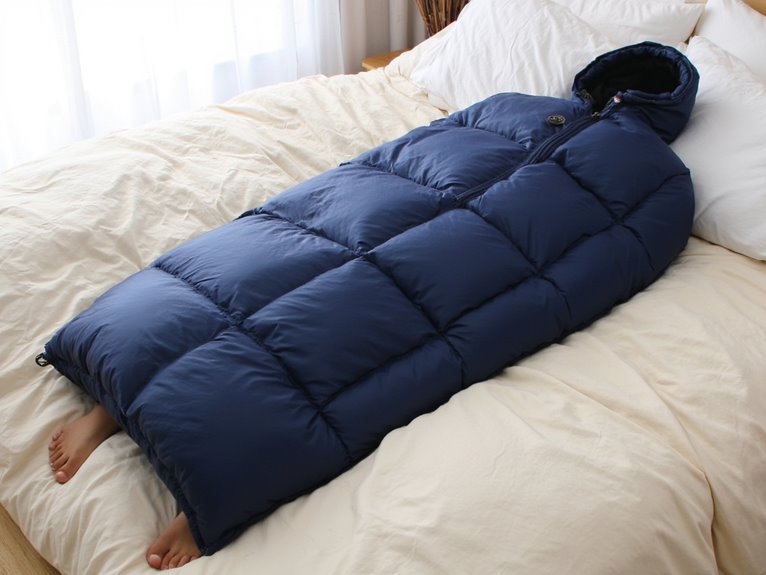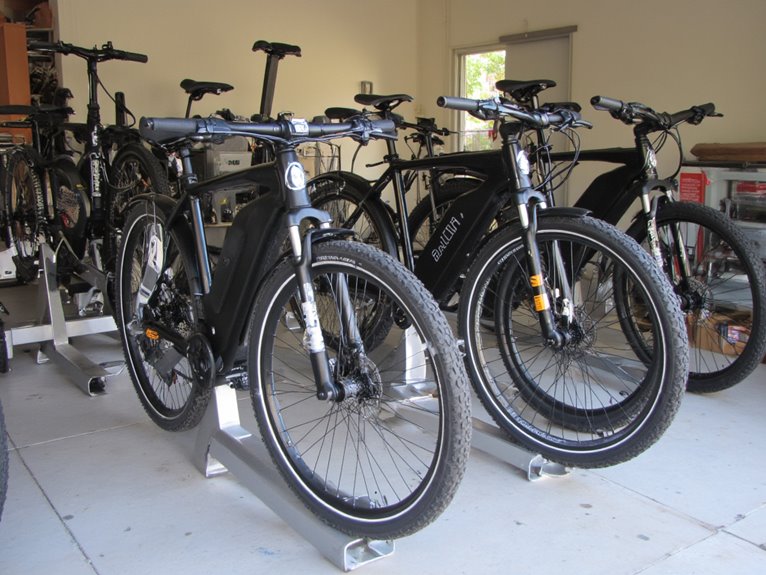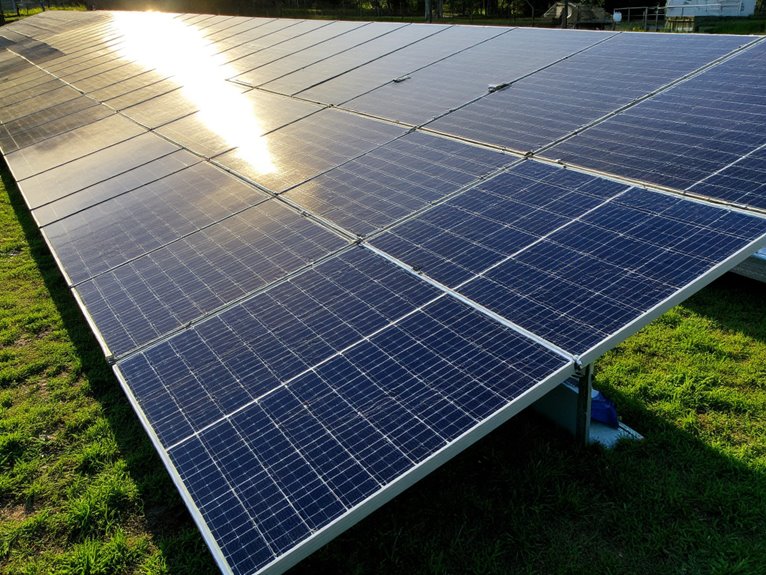Can You Use a Sleeping Bag as a Blanket? Pros & Cons
You can use a sleeping bag as a blanket, though it involves trade-offs. Sleeping bags offer superior insulation with temperature ratings 20-40 degrees lower than household bedding and advanced heat-trapping mechanisms. However, their tubular design restricts movement, zippers can malfunction, and they’re bulkier than traditional blankets. Down fills lose 90% thermal efficiency when wet, while synthetic materials only lose 40-50%. Breathability issues may cause overheating, and maintenance proves more complex than simple blanket care. Understanding these factors helps optimize your choice.
We are supported by our audience. When you purchase through links on our site, we may earn an affiliate commission, at no extra cost for you. Learn more. Last update on 5th December 2025 / Images from Amazon Product Advertising API.
Notable Insights
- Sleeping bags can function as blankets and offer superior insulation with temperature ratings 20-40 degrees lower than household bedding.
- Advanced heat retention technology and draft-preventing designs make sleeping bags more effective at trapping warmth than traditional blankets.
- Sleeping bags are bulkier, heavier, and more confining than blankets, potentially causing discomfort and storage challenges.
- Breathability issues may cause overheating and condensation buildup when sleeping bags are used as open blankets.
- Traditional blankets offer better durability and easier maintenance compared to sleeping bags with fragile insulation chambers and zippers.
Understanding the Fundamental Differences Between Sleeping Bags and Blankets
The engineering behind sleeping bags and blankets reflects two fundamentally different approaches to thermal management and sleep comfort.
Sleeping bag design centers on containment and heat retention through a cocoon-like structure that wraps around your entire body. You’ll find zippers, drawstrings, hoods, and specialized insulation that minimizes air gaps and heat loss. The design includes extra material beneath you for cushioning and ground insulation.
Blanket functionality emphasizes versatility and freedom of movement. You get flat, rectangular fabric without restrictive zippers or form-fitting shapes. While blankets offer less built-in insulation management, they allow unrestricted repositioning and easy temperature adjustment through folding or layering.
Sleeping bags are engineered for specific temperature ratings, while blankets lack standardized thermal performance specifications. This fundamental difference affects how effectively you can interchange these sleep systems. The insulation types used in sleeping bags—whether down insulation, synthetic, or hybrid—are specifically chosen and constructed to maximize thermal efficiency within the bag’s sealed environment.
Pros of Using a Sleeping Bag as a Blanket
When you unzip a sleeping bag and use it as a blanket, you’re accessing insulation technology specifically engineered for temperature regulation.
The synthetic or down fill materials create superior thermal efficiency compared to standard blankets, with most bags rated for temperatures 20-40 degrees below typical household bedding capabilities.
This sealed warmth design means you’ll retain notably more body heat even when the bag isn’t fully enclosed around you.
Down sleeping bags with 600+ fill power deliver exceptional warmth-to-weight ratios that make them particularly effective as high-performance blankets.
Superior Insulation Properties
Insulation efficiency stands as sleeping bags’ most compelling advantage when repurposed as blankets. You’ll experience superior warmth retention through advanced air-trapping mechanisms that outperform traditional blankets. Down-insulated bags deliver exceptional warmth-to-weight ratios, while synthetic fills provide reliable performance in damp conditions.
| Insulation Type | Weight (per warmth unit) | Moisture Performance | Temperature Range |
|---|---|---|---|
| Down Fill | Lightest | Poor when wet | -20°F to 40°F |
| Synthetic Blend | Medium | Good moisture resistance | -10°F to 50°F |
| Wool Fill | Heaviest | Excellent when damp | 0°F to 60°F |
| Cotton Batting | Heavy | Poor moisture wicking | 30°F to 70°F |
| Polyester Hollow | Light-Medium | Fair moisture handling | 10°F to 55°F |
Sleeping bags minimize conductive, convective, and radiative heat loss through specialized construction. Their enclosed design traps warm air more effectively than blankets, creating stable thermal environments around your body.
Sealed Warmth Design
Unlike traditional blankets that allow warm air to escape through gaps and shifting fabric, sleeping bags create a sealed thermal envelope that maximizes heat retention around your entire body. This sealed warmth design prevents drafts through multiple engineered features.
Zipper baffles block air leaks behind closures, while snug neck collars create an airtight seal around your shoulders. The foot box design eliminates bottom openings where cold air typically enters.
These heat retention features work together systematically. Overlapping fabric layers with offset seams reduce thermal bridging. Anti-snag zipper strips prevent gaps from malfunctioning closures. Flexible cord systems let you adjust the seal tightness based on conditions.
The sealed warmth benefits become most apparent during winter use, where traditional blankets lose significant heat through perimeter gaps and shifting coverage.
Cons of Using a Sleeping Bag as a Blanket
While sleeping bags excel in outdoor environments, they present several significant drawbacks when used as indoor blankets. You’ll experience sleeping position discomfort due to their confining tubular design, which restricts natural movement during sleep. Side and front sleepers find these bags particularly uncomfortable since they can’t stretch freely or adjust positions without becoming twisted inside the fabric.
Zipper functionality issues create additional problems. These mechanisms frequently jam or break under repeated use, and their placement limits how fully you can open the bag.
Sleeping bag zippers frequently malfunction with regular use and restrict your ability to fully open the bag for comfortable access.
The lightweight fabrics tear easily on rough surfaces, while insulation shifts and clumps with blanket-style use. This clumping reduces the bag’s thermal properties and requires proper washing and drying techniques to restore loft.
You’ll also face portability challenges, as sleeping bags remain bulkier and heavier than traditional blankets, making storage inconvenient for regular household use.
Temperature Control and Insulation Performance Comparison
When comparing temperature control capabilities, sleeping bags demonstrate superior thermal performance through their engineered design and specialized insulation systems.
You’ll find sleeping bags maintain consistent internal temperatures through mummy shapes and draft collars that minimize air gaps. Down insulation delivers exceptional warmth-to-weight ratios with superior compressibility compared to standard blanket materials.
Sleeping bags excel at airflow management through integrated zippers, baffles, and draft tubes that prevent thermal leaks.
You can adjust ventilation based on conditions while maintaining heat retention. Blankets lack these control mechanisms, allowing free air circulation that increases heat loss in cold environments.
The insulation efficiency difference is substantial. Sleeping bags create sealed microenvironments around your body, while blankets depend on careful tucking and layering techniques.
Advanced sleeping bag features like insulated hoods and closure systems provide advantages blankets simply can’t match. Down insulation excels in cold, dry environments with comfort ratings reaching -10°C, providing superior warmth retention compared to conventional blanket materials.
Weight, Portability, and Design Considerations

Beyond thermal performance, the physical characteristics of sleeping bags present distinct trade-offs that directly impact their suitability as blanket alternatives. Weight trade-offs become immediately apparent when comparing options. Ultralight sleeping bags weigh as little as 1 pound, while most models range between 2-4 pounds. Quilts consistently offer superior weight advantages for backpackers.
Portability challenges emerge despite compression capabilities. Sleeping bags occupy considerably more space than blankets, even with water-resistant stuff sacks. This bulk impacts long-distance transportation and campsite layout requirements.
Design features directly influence versatility. Mummy bags maximize thermal efficiency but restrict movement. Full-length zippers enable blanket conversion, while rectangular shapes provide better comfort when unzipped.
Some convertible models offer dual-mode functionality, though they sacrifice specialized performance for adaptability. For enhanced comfort when using sleeping bags as blankets, consider adding sleeping pads underneath, which typically range from 2-5 inches in thickness and provide crucial cushioning against hard surfaces.
Material Properties and Moisture Resistance Factors

When you’re using a sleeping bag as a blanket, the fill material directly affects how well it’ll perform in humid bedrooms or if you accidentally spill liquids on it.
Down-filled bags lose their insulating power when wet and take forever to dry, while synthetic fills maintain warmth even when damp and bounce back quickly.
Wool bags offer the best of both worlds—they’ll keep you warm even if moisture gets in, but they’re heavier and take longer to dry than synthetic options.
The shell materials such as tough canvas and polyester provide weather resistance that helps protect against moisture penetration regardless of the internal fill type.
Insulation Performance When Wet
Moisture presents one of the greatest challenges to sleeping bag insulation performance, fundamentally altering how different materials retain heat. When wet, down insulation loses up to 90% of its thermal efficiency due to clumping and loft reduction. The fibers compress into wet paper mache-like masses that can’t trap air effectively. Synthetic materials maintain better performance in moisture challenges, losing only 40-50% of their warmth when saturated.
| Insulation Type | Dry Performance | Wet Performance | Recovery Time |
|---|---|---|---|
| Down | Excellent | Poor (10-20% retained warmth) | 6-12 hours |
| Synthetic | Good | Fair (50-60% retained warmth) | 2-4 hours |
| Hybrid | Very Good | Good (60-70% retained warmth) | 3-6 hours |
Synthetic fibers’ hydrophobic properties prevent water absorption, while down’s natural structure readily absorbs moisture, dramatically reducing insulation efficiency.
Material Durability Comparison
Material durability fundamentally determines whether you’ll get years of reliable use from your sleeping gear or find yourself replacing it after a single season.
Blankets maintain superior structural integrity through solid construction without baffle tubes or delicate shell materials. Wool blankets resist fire damage and withstand compression cycles that would degrade sleeping bag loft permanently. You’ll find blanket longevity exceeds sleeping bags because they don’t rely on maintaining insulation chambers or specialized coatings.
Sleeping bag maintenance requires careful handling of fragile outer shells and DWR treatments that deteriorate over time. The repeated compression during packing stresses insulation fibers and fabric integrity.
Synthetic blankets handle abuse better than down-filled bags, which lose performance when moisture penetrates delicate clusters. Repairing blankets involves simple fabric work, while sleeping bags require complex baffle restoration.
Breathability and Temperature Regulation
Beyond structural concerns, sleeping bags create significant thermal regulation challenges that standard blankets don’t face.
You’ll encounter breathability challenges when using sleeping bags as blankets since they’re engineered to trap body heat rather than allow air circulation.
Temperature differences become problematic because sleeping bags have specific ratings—often 20°F to 40°F ranges—making them unsuitable for variable room temperatures.
Down insulation offers superior warmth-to-weight ratios but loses 90% effectiveness when wet.
Synthetic materials maintain insulation when damp but weigh 30% more than down.
You risk overheating in temperatures above the bag’s rating since moisture-wicking properties work internally, not externally.
Sleeping bags manage moisture through vapor barriers, but this system fails when used openly as blankets, potentially causing condensation buildup and discomfort.
Best Scenarios for Each Option Based on Environmental Conditions
While sleeping bags and blankets both provide warmth, your choice should align directly with the specific environmental conditions you’ll face. Temperature ratings determine which option delivers peak performance.
For cold environments below 40°F, mummy sleeping bag types excel at heat retention through efficient body contouring. Rectangular bags offer moderate warmth with added movement freedom for car camping scenarios.
Consider these environmental factors when choosing:
- Cold, dry conditions – Traditional sleeping bags trap heat effectively and block wind penetration
- Mild, variable weather – Wool blanket materials adapt quickly to temperature changes throughout the night
- Humid or damp climates – Wool blankets maintain insulation properties when moisture is present
Match your gear to expected overnight lows. Sleeping bags work best when temperatures drop considerably, while blankets handle moderate conditions with superior versatility. For outdoor adventures, pairing either option with a sleeping pad creates a barrier against ground contact that prevents heat loss through conduction.




